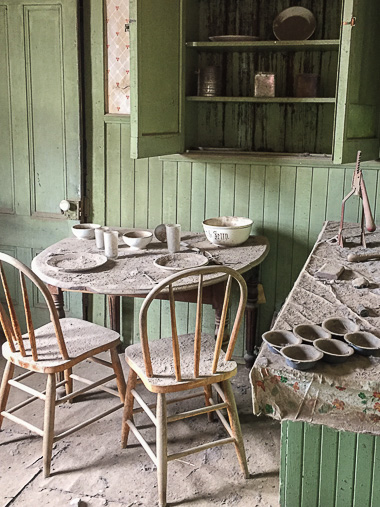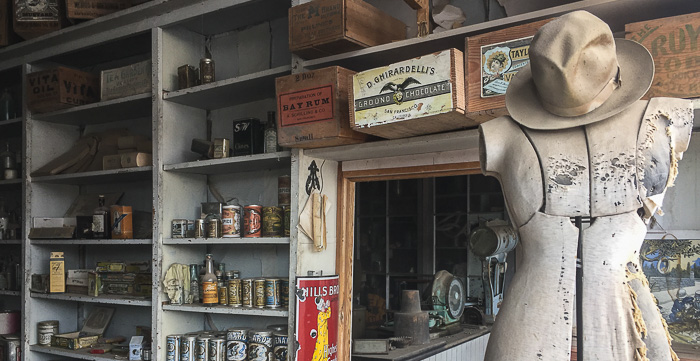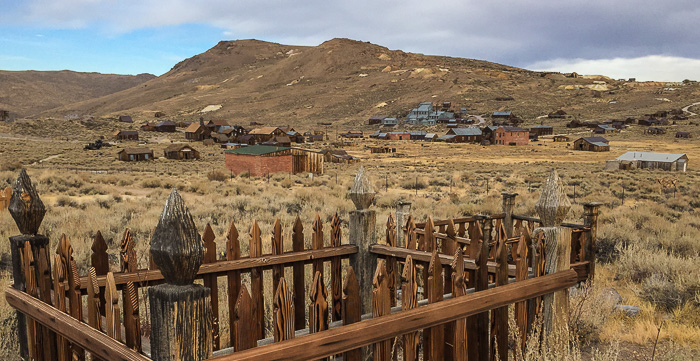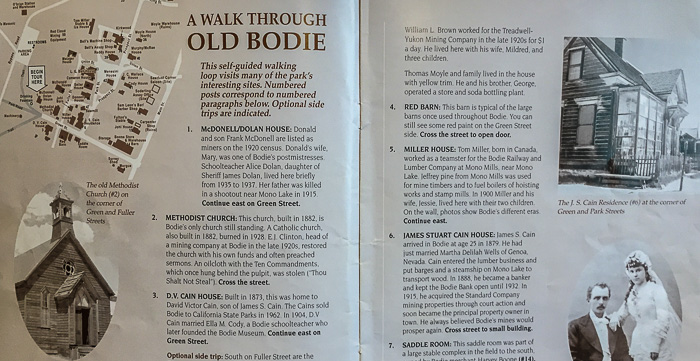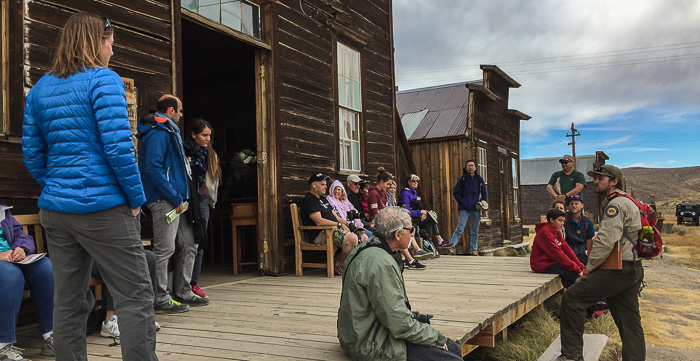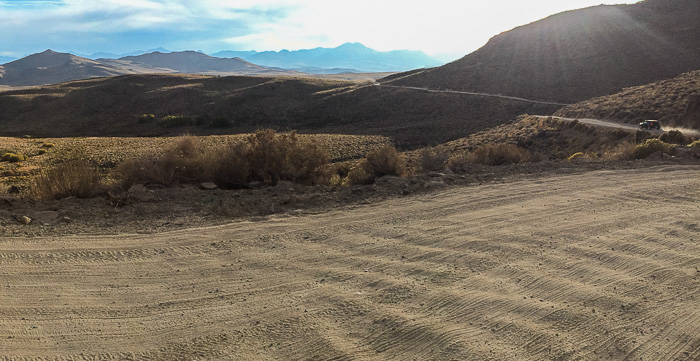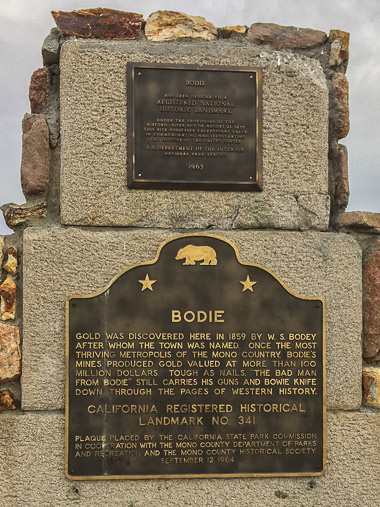Bodie Ghost Town: A Peek into the Past
I’m not sure why, but when I hear the words “ghost town” I immediately picture a Disney-esque, overly commercialized western town with a shooting gallery, old-timey photo booth, and Sarsaparilla for sale in the corner saloon. Bodie is the polar opposite.
Purchased by the California State Parks in 1962, the town of Bodie is a rustic, frozen tableau, preserved in a state of “arrested decay.” Buildings are stabilized or repaired but not restored. Beds, clothing, desks, books, bottles, dishes, canned goods, and thousands of other examples of the trappings of life are locked inside each building, slowly, quietly, gathering dust. Visitors are free to wander the town, lean close to windows, and peer into the past.
I noticed just three modern intrusions: the park entrance station, the parking lot and bathrooms (grateful for those!), and the small museum/visitor center on main street. There’s no food or trinkets or shows, just…Bodie. The Bodie State Historic Park website claims that the town looks “…much the same as it did 50 years ago when the last residents left.”
It’s difficult to believe that the 100+ structures scattered about town comprise only 5% of what once existed in Bodie’s bustling heyday. A (very) brief history:
- W.S. Bodey discovered gold here in 1859 (yay!). He died two months later and his name will likely be misspelled for all eternity (aww).
- A rich vein of gold was discovered in 1875 bringing boom years from 1877 to 1881 when the town had 30 mines, 9 stamp mills, ~8,000 residents, 60 saloons, and thriving businesses including dance halls, opium dens and prostitute “cribs”.
- The boom ended quickly, mines played out, and population dropped. Disastrous fires in 1892 and 1932 hastened the town’s demise.
- Caretakers were hired to protect the town from vandalism until it was purchased by the California State Parks in 1962.
If you visit, pay the $2 for a self-guided tour booklet - it’s well worth it! Numbered posts around town match up with numbers in the guide, each one revealing a paragraph or two about Bodie’s residents and colorful history.
We enjoyed exploring on our own, but were thrilled to catch a historical talk on the front porch of the museum. As we lounged, a knowledgeable Park Service employee brought the town to life with photos and stories. One of my favorites is the tale of the “little fire bug”, a 2 1/2 year old cutie who set fire to the town in 1932.
As the story goes, the boy was at a birthday party expecting cake and ice cream, but was served green jello instead. Mad as all get-out, he left the party, went to the Sawdust Corner Saloon, started playing with matches, and set a fire that burned down all but 5–10% of the town. Oh my! Other tidbits that caught my fancy:
- We were told that Bodie routinely ranks as one of the coldest spots in the lower 48. I looked it up later, and it’s true. It tops the list of “Places That Most Often Have Freezing Temperatures” with 308 days under 32 degrees. Brr!
- Bodie routinely got buried in snow 10 feet deep (and sometimes 20) but the mines operated 6 days/week, 24 hours/day, so snow days for these hardy souls. Miners had to dig out, strap on snowshoes, and get to work.
- Only white males were allowed to work in the mines.
- The Standard Mine (where the Standard Mill still stands) made $18 million over 38 years.
- Herbert Hoover’s brother Theodore Hoover was once superintendent of the Standard Consolidated Mining Company (a house near the mill is named for him).
Visitors can tour the Stamp Mill for $6 per person. Tours run regularly in the summer (three times a day); call for times in September and October (760–647–6445). The park charges an entrance fee of $8/adult and $5/child (age 3–17). Check their website for up-to-date information. Special events in the summer include a Ghost Walk, Ghost Mill Tour, and Star Stories. Fun!
Bodie lies about 30 miles northeast of Lee Vining. The drive took 45 minutes with 30 minutes of that on 270, the 14 miles of unpaved road that runs from Route 395 to Bodie. Be prepared for a slow, bumpy ride on washboard roads.
Aside: Surprisingly, we had numerous conversations about washboard roads throughout our road trip, pondering how they are formed (tires hitting the same spots repeatedly, spraying the dirt into mounds?) and whether it’s a new phenomenon (due to modern suspension in cars). If you’re curious, this article explains all and it turns out washboards will inevitably form whether driving a modern car or old-fashioned buggy, unless, that is, you drive less than three miles/hour. Science!
This article is one of many written about a 3-week road trip spent hiking and camping in the Eastern Sierras and Death Valley. To see all articles, check out this trip summary.
